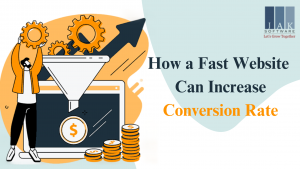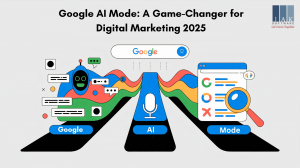In the ever-evolving world of SEO, page experience has emerged as a critical ranking factor, and in 2025, it could determine whether your website thrives or gets buried in search results. With Google’s continuous algorithm updates and the rise of AI-driven search, businesses must prioritize website optimization, fast-loading pages, and user-friendly design. It’s all because of core web vitals to stay competitive.
What Is Page Experience & Why Does It Matter in 2025?
Page experience refers to how users perceive and interact with your website. Google measures this through several key signals:
- Core Web Vitals (Loading speed, interactivity, visual stability)
- Mobile-Friendliness (Responsive design, easy navigation)
- Safe Browsing (No malware or deceptive content)
- HTTPS Security (Encrypted connections)
- Intrusive Interstitial Avoidance (No annoying pop-ups)
In 2025, Google is expected to tighten these metrics, meaning slow, clunky, or poorly designed websites will struggle to rank, no matter how great their content is.
How Page Experience Impacts SEO & Business Growth
1. Google Prioritizes User Satisfaction
Google strives to connect users with the most accurate and valuable information available. If your site has high bounce rates or slow load times, search engines will push it down in rankings—hurting your visibility.
2. AI Marketing Services & Personalization
With AI-driven search (like Google’s SGE), user experience is even more critical. AI marketing services leverage machine learning to analyze user behavior, meaning sites with poor UX will lose traffic to competitors with smoother experiences.
3. Social Media Optimization & Traffic Retention
If users come from social media optimization efforts but leave immediately due to a bad experience, your rankings suffer. A seamless page experience keeps visitors engaged longer, improving time on site and reducing bounce rates.
4. Business Advertising ROI Depends on Landing Page Quality
Paid ads (business advertising) drive traffic, but if your landing pages are slow or confusing, you waste ad spend. Optimizing page experience ensures higher conversions from both organic and paid traffic.
How to Improve Page Experience for Better SEO in 2025
1. Optimize Core Web Vitals
- LCP (Largest Contentful Paint): Aim to load your most important content in 2.5 seconds or less.
- INP (Interaction to Next Paint): Buttons and links should respond quickly (<200ms).
- CLS (Cumulative Layout Shift): Avoid sudden layout jumps that frustrate users.
2. Accelerate Mobile Performance
- Use AMP (Accelerated Mobile Pages) for faster loading.
- Compress images and leverage lazy loading.
- Test mobile usability with Google’s Mobile-Friendly Test.
3. Leverage AI Marketing Services for UX Insights
AI tools can:
- Predict user behavior to improve navigation.
- Personalize content for better engagement.
- Automate A/B testing for higher conversions.
4. Align with Social Media Optimization Strategies
- Ensure fast-loading landing pages for social media traffic.
- Use interactive elements (polls, quizzes) to boost engagement.
- Optimize meta tags and Open Graph markup for better CTR.
5. Secure & Streamline Your Website
- Migrate to HTTPS for security.
- Remove intrusive pop-ups that hurt UX.
- Implement structured data for rich snippets.
Conclusion: Make Page Experience Your SEO Priority in 2025
As we head deeper into 2025, one thing is clear: page experience is no longer optional—it’s essential. Google’s evolving algorithms, powered by AI and focused on user satisfaction, demand fast, secure, and intuitive websites. Whether you’re leveraging AI marketing services, investing in social media optimization, or running business advertising campaigns, none of it will deliver results if your website provides a poor user experience.
By prioritizing Core Web Vitals, mobile optimization, site security, and clean design, you’re not just improving your rankings—you’re building trust, increasing conversions, and setting your business up for sustainable growth in a competitive digital landscape.




